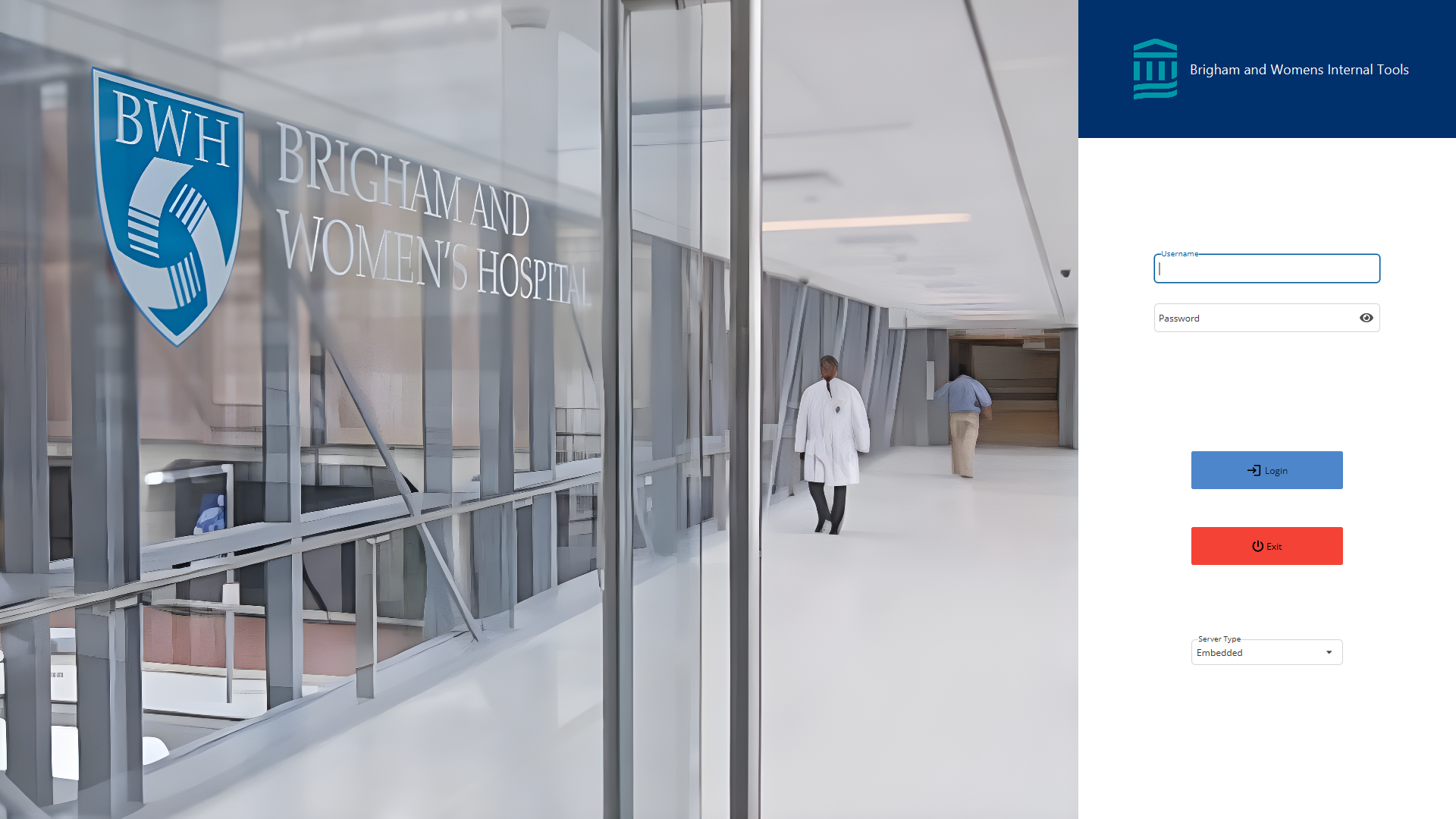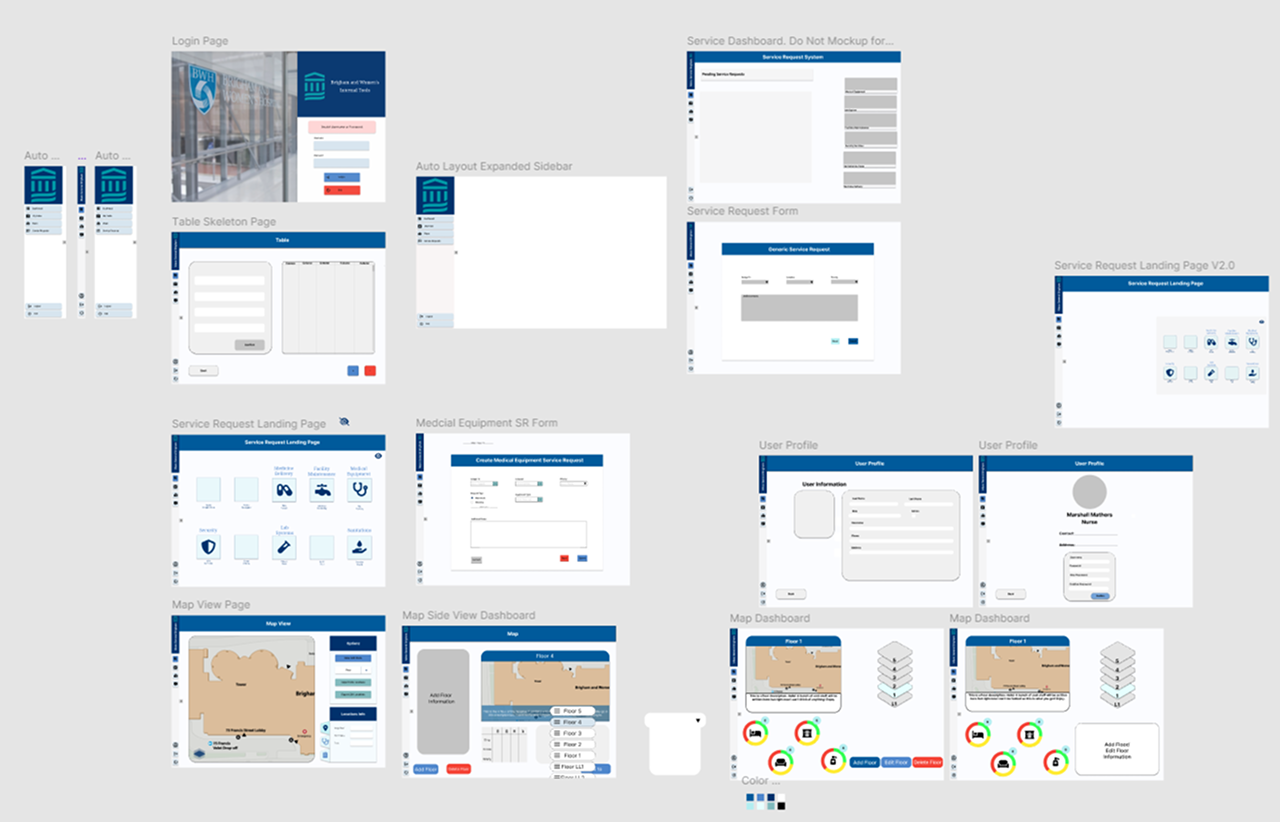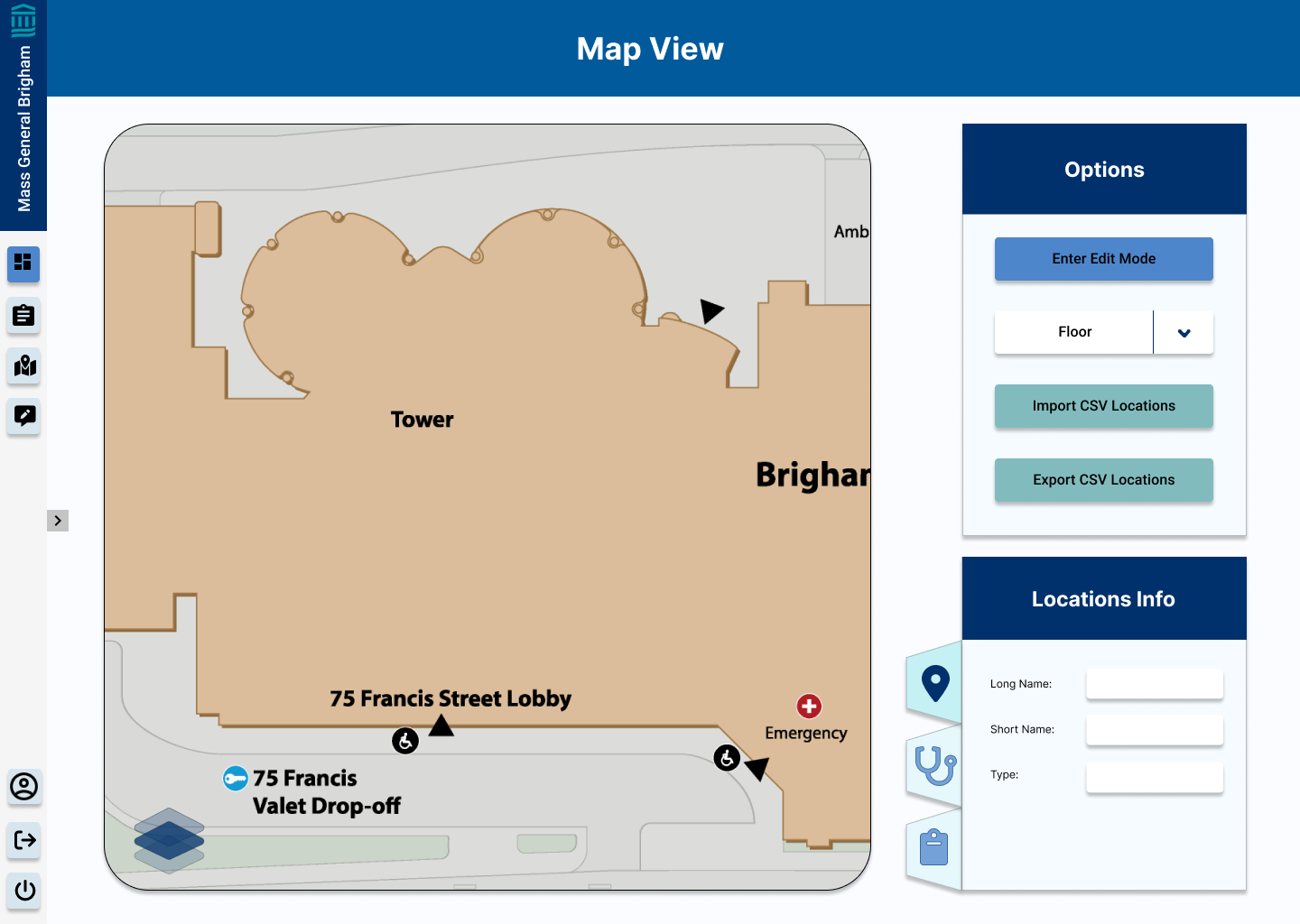Brigham and Women's Hospital Prototype
Project Type: Java Software Application
Software used: JavaFX, Jira, Draw.io, Figma
Languages: Java
Team Size: 10
My Responsibilities: Front-End Engineer, Product Owner
Duration: 7 Weeks
About

The Brigham and Women’s Hospital Prototype was an application created in conjunction with Brigham and Women’s Hospital whom outlined various criteria for the application. This prototype was developed as part of the curriculum for the CS 3733: Software Engineering I course. Our team of 10 members used the Scrum development cycle, managed and maintained a product backlog, maintained up-to-date documentation, and delivered a successful prototype over several week long sprints.
I was a Front-End Engineer and the Product Owner on the team. As a Front-End Engineer, I was responsible for creating UML Diagrams, designing various UI/UX in Figma, programming various UI/UX elements, and integrating the back-end queries into the front-end elements of the application. As the Product Owner, my responsibility was to manage and prioritize the backlog in Jira, create tasks based on the software requirements given to us, and assist in distributing tasks for each weekly sprint.
Iterating to Integrating
As part of Front-End development, we went through multiple iterations of each page in the application. Above is just a few example of the numerous pages we redesigned.
As mentioned, we used the Scrum development cycle. We met every day for stand-ups with one meeting a week creating, assigning points to, and distributing tasks. As the Product Owner, it was my job to translate our requirements into tasks and assist the Lead Engineer in distributing the tasks. I organized and prioritized all of our tasks and goals onto Jira, maintaining a firm backlog for our team. Every week, we would receive updated instructions from both our professor and our contact at Brigham and Women’s Hospital who would help guide what features to develop and allowed me to start planning and prioritizing which features to develop first.
After task creating and distribution, we would work daily, both together and individually, accomplishing tasks and creating new features. Every new major feature required the creation of sequence charts, entity-relationship diagrams, and class charts. This allowed us to have a collection of documentation for further development, keeping track of how every system interacted with the rest of the application. Every task was peer reviewed by another member of the team who would approve the code or request changes.
During our stand-up meetings, we would discuss our progress on each tasks, our blockers or issues we were facing, and where we needed assistance. This allowed the entire team to be informed of development which led to pivoting where necessary, assigning more members to certain tasks, and learn where our team struggled. It further allowed us to revise and correct our point scoring system throughout the project’s lifetime. We followed this strict pipeline daily with internal task schedules for completion and review during the week. This allowed for fluid development of our application with minimal bugs or errors.
UI Design

Figma was the primary software used for UI mock-ups. Each member of the Front-End Engineering team worked together to create various UI mock-ups for every iteration of the project. Above is the various mock-ups that I and my fellow engineers created. We created multiple mock-ups across all iterations, receiving feedback from Brigham and Women’s Hospital and updating accordingly. I utilized many of the features of Figma including auto-layout frames to assist in a smooth transition from mock-up creation in Figma to implementation in JavaFX.
What I Learned
This project taught me the complete pipeline of working on a full scale application with a large group of people. Being a team of 10, it was important to learn how to work with every member of the team, how to prevent teamicide, and how to bolster each other’s strengths while limiting our weaknesses. I learned extensively how to use Figma when designing applications and how to take the UI mock-up and convert it into functional code for an application. I still, to this day, use the skills I learned in this project to effectively and efficiently create UI. Finally, I learned about how to create an Object Oriented application fully within Java with extensive software documentation, allowing for maintainability and scalability.


